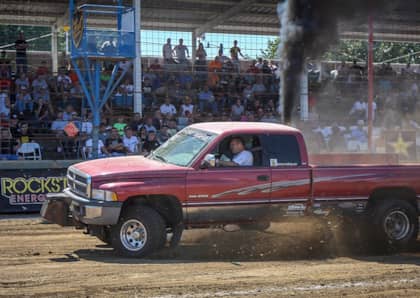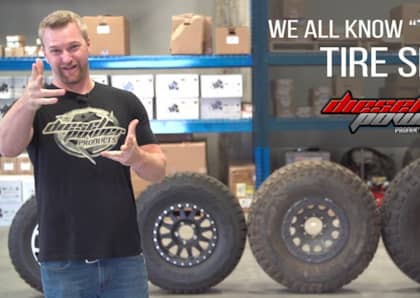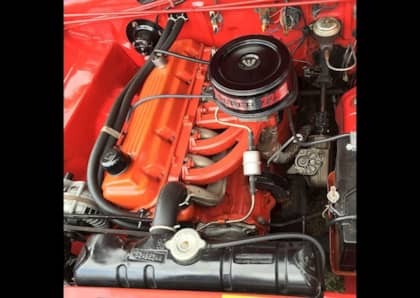9 Reasons Your Truck Needs Air Springs
We’ve all seen it: a truck that’s ill-prepared to tow whatever it’s attached to. It squats, sags, brakes poorly, wanders all over the highway and rides as rough as it looks. While perpetually increasing gross combined weight ratings have empowered consumers to tow more and more with their trucks, many quickly realize their rigs can use a helping hand in the suspension department. This is a major reason why air spring systems (also known as air helper bags) have become so popular in recent years. In 2017, it’s about as common to find a duo of air bags residing under a pickup as it is to find an aftermarket exhaust system.
So, what makes air spring suspension systems so great? Read on to see why these tire-like, load-carrying components are the savior for any over matched OEM suspension system — and nine reasons why they belong on your truck.
1. Level Rear Suspension

There is no better way to ensure your truck tows and hauls how it was designed to than by making the rear suspension sit level, courtesy of an air spring suspension system. In addition to retaining factory handling, braking and steering characteristics (more on that in numbers 4 and 5), air springs reduce the potential for leaf spring fatigue, in which factory leaf springs permanently sag due to being overloaded and over-extended for lengthy periods of time.
2. Maximized Load Carrying Capacity

Although air springs won’t increase the amount of weight your truck can tow or haul, they do allow your truck to live up to its full potential when pushing its gross combined weight rating (GCWR) or gross combined vehicle rating (GVWR). While today’s pickups offer impressive tow ratings on paper, in the real world, it doesn’t always look as pretty — especially when proper weight distribution or positioning can’t be achieved due to the item(s) you’re towing. With the ability to independently control air pressure present in each spring, air springs allow you to compensate for those uneven or off-center loads.
3. Eliminates Bottoming Out

If you’ve ever felt the bone-jarring impact that is a bottomed out suspension, you are either overloading your vehicle or in desperate need of some type of load leveling aid. In addition to keeping you off the bumpstops, air springs will save your factory suspension a lot of wear and tear. This allows you to get more life out of your shocks, not to mention that they’ll bring ride quality and safety back into the picture.
4. Steering Stability

A sagging rear suspension unloads the front end of your truck, which, on top of causing a “light steering” sensation you can feel in your hands, also makes steering inputs less effective. With a leveled rear suspension, more precise and sure-footed steering performance is brought back into the equation. Beyond reinstating steering stability, having even weight distribution at each corner of the truck will prolong the service life of your tires.
5. More Effective Braking

As most of us know, a truck’s front brakes are responsible for applying most of its stopping power to the ground. With excessive rear suspension plunge, the braking ability sent to your front tires is compromised. The suspension leveling ability afforded by air springs brings equal weight distribution back to all four corners, for the most effective braking performance possible.
6. Reduced Trailer Sway

Thanks to offering vast air pressure adjustability (somewhere between 5 psi to 100 psi on most systems), air springs allow you to achieve the exact truck-to-trailer height you’re after. The ability to precisely set your truck-to-trailer connection point will help reduce trailer sway whether you encounter cross winds, inclement weather, or even if you need to make an emergency maneuver.
7. Reduced Body Roll

Decreased body roll is always welcomed anytime you’ve got serious weight behind you — and air spring systems provide just that. Whenever you round a corner, head into a cross wind or are forced to make a quick lane change, the inflated air spring compresses. When the air spring compresses, you decrease the volume of the air spring. This increases its internal pressure, thereby improving spring resistance. The result is that you experience stability no matter the situation.
8. Proper Headlight Aim

Correct headlight aim is yet another benefit of an air spring system’s ability to level your truck. Not only is proper headlamp alignment critical for overall safety, but it will keep you from blinding other motorists as you approach them. We’ve heard it argued that, given all the bells and whistles offered on today’s trucks, OEM’s should offer electronically-adjustable headlights to compensate for rear suspension sag. We think if you load your truck properly (or better yet, outfit it with the proper equipment), there is no reason for such a feature.
9. Improved Ride Comfort

Last, but certainly not least, the ride quality of your tow rig can be fine-tuned to your liking with air springs onboard. Be it soft, firm or somewhere in between, the perfect blend of work and comfort can be achieved by adjusting the amount of air pressure present in the springs. You can max out the springs for the heaviest of loads or tailor them to better absorb impact shocks from the road when empty or toting lighter cargo.











